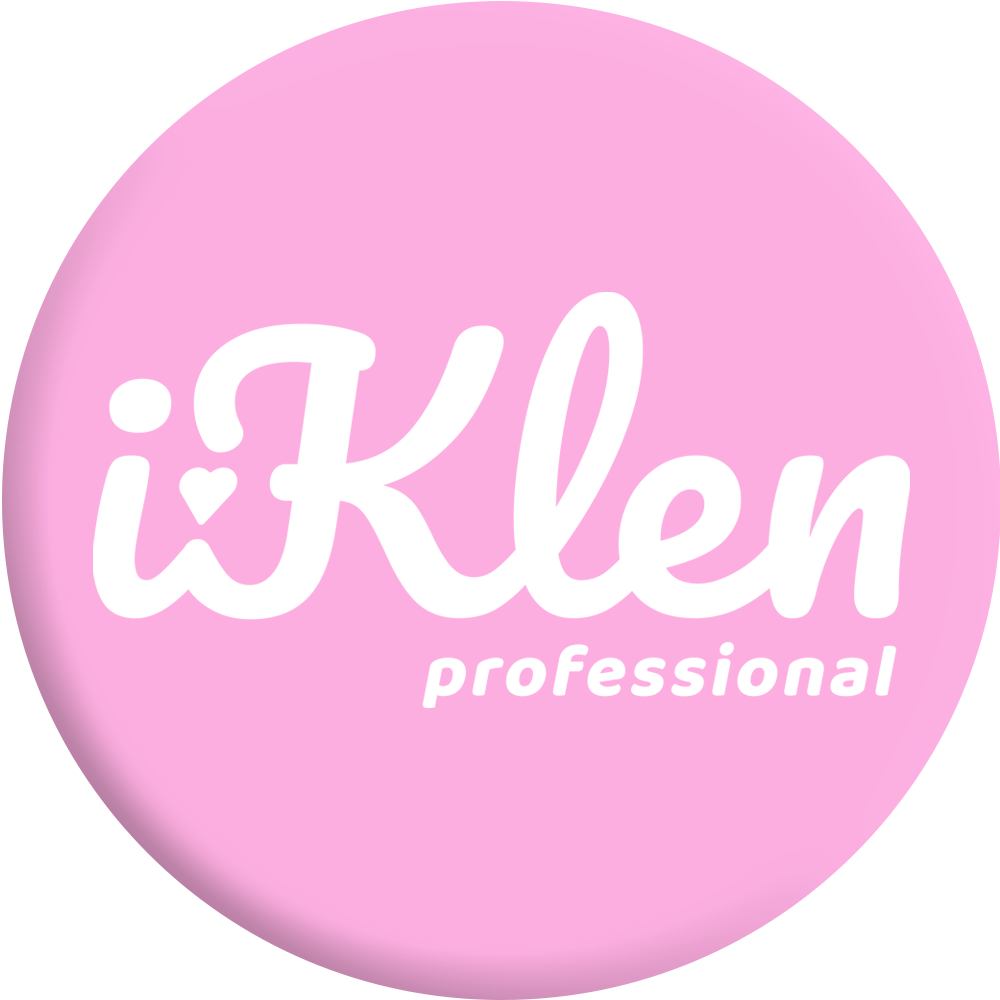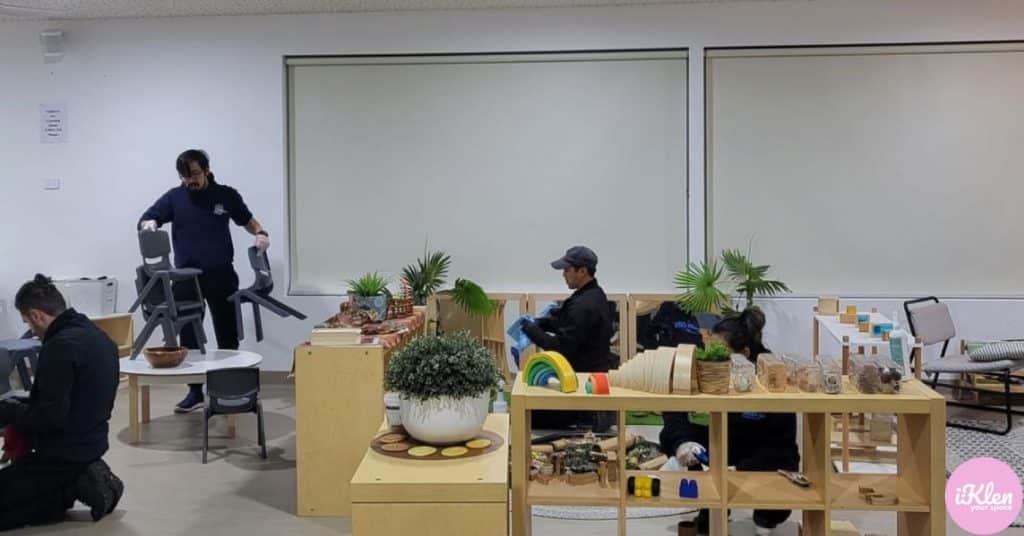When it comes to childcare centres, there’s one constant – mess. With the ever-present whirlwind of activities, toys, and little hands, dirt and germs can quickly become unwelcome guests. This can disrupt not just the centre’s operations, but also the lives of the children, their parents, and the educators who care for them.
Regular cleaning and sanitizing are more than just about maintaining a pleasant environment. They’re crucial steps in reducing the viruses and bacteria that can throw a childcare centre into chaos. A clean childcare centre is a smoothly running childcare centre, causing minimal disruptions to many people’s lives.
In this article, we’ll delve into the importance of maintaining a clean childcare centre, what areas should be focused on, and how often based on our experience from providing childcare cleaning services in Melbourne Victoria.
Understanding the Importance of Cleanliness in Childcare
Health Risks Associated With Poor Cleanliness
The daycare environment increases the risk of contagious ailments such as diarrhea, cold, common flu, respiratory syncytial virus (RSV), scabies, strep throat, impetigo, head lice, and pink eye. While some can resolve quickly, others may necessitate weeks of isolation for healing such as hand, foot and mouth disease.
If we’re lax on daycare cleansing, a myriad of infections can spread through direct or indirect contact, affecting both the children and staff. These illnesses can even extend beyond the childcare setting to the children’s homes, impacting siblings and parents.
How Clean Environments Support Development and Learning
A clean, sanitary space is essential for children’s growth and learning. Maintaining cleanliness in areas such as carpets, mats, and curtains by adopting practices like daily vacuuming, steam cleaning every six months, and routine washing helps create an environment conducive to learning.
Keeping the sand pits clean is another critical aspect, as they are a potential source of infection and must be well managed. Ensuring cleanliness allows children to explore, play, and learn in a healthy environment, free from any disease-causing germs or bacteria.
How Cleanliness in a Childcare Centre Help Attract More Clients
Maintaining high standards of cleanliness in a childcare centre serves as a testament to our commitment towards the well-being of the children. Parents value the assurance that their child is in a safe, hygienic environment.
Demonstrating rigorous cleaning schedules and routines can significantly contribute to attracting more clients. Potential clients viewing our cleanliness practices such as cushion cover washing, carpet cleaning, and sandpit maintenance get a reassurance of their child’s health and safety in our care.
How Cleanliness Reduce the Overhead Costs of Potential Disease Outbreaks
Maintaining high cleanliness standards in your childcare center significantly reduces the risk of disease outbreaks, leading to fewer sick days and higher staff productivity. This not only saves costs associated with absenteeism and temporary staffing but also enhances your facility’s reputation, attracting more enrollments and boosting revenue.
Clean environments ensure regulatory compliance, preventing fines and legal issues while extending the lifespan of your facility’s fixtures.
Key Areas and Items to Focus On
There’s a multitude of surfaces and items within a childcare center that needs regular attention to uphold a clean and sanitary environment. To aid in this task, we should divide the cleaning focus into distinct areas.
Frequent Touch Points and Germ Hotspots
High contact points or ‘germ hotspots’ are proverbial magnets for bacteria and viruses, given their routine interaction with children, staff, and parents.
Examples of these ‘hotspots’ include doorknobs, light switches, faucet handles, and play equipment. As such, these areas require vigilant and routine disinfection, perhaps even multiple times a day, depending upon the level of use each one receives.
After all, our best defense against infectious diseases lies in the sanitization of these repeatedly touched surfaces.
Toys, Equipment, and Shared Spaces
In a similar vein, toys and play equipment are regular contact points for children and hence potential sources of cross-contamination.
Besides regular toy cleaning, ensuring that children have clean hands before playtime can reduce the scope for transmission of germs. Similarly, shared spaces like nap areas or playrooms need to be cleaned daily, considering the number of children accessing these regions.
Regular cleaning of these critical areas helps to avoid the spread of infections and keeps the childcare environment as welcoming and safe as possible for all parties involved.
Effective Cleaning Strategies for Childcare Centers
Daily Cleaning Routines and Their Benefits
Adopting daily cleaning practices in childcare settings plays a pivotal role in curbing the spread of common diseases and harmful contaminants.
Routine cleaning, when done with diligence, curtails the accumulation of germs on surfaces often touched by little hands such as doorknobs, toys, and play equipment.
We advocate for regular vacuuming of carpets and mats accompanied by the washing of cushion covers and curtains in high-traffic areas. These actions collectively foster a healthier atmosphere, offering benefits like a minimized rate of illness which, in turn, reduces absences of both children and staff. A clean environment also soothes parental concerns and bolsters the reputation of the daycare center.
Implementing Green Cleaning Practices
Emphasizing environmentally friendly cleaning measures presents an additional advantage in safeguarding the health of children and staff.
The utilization of certified green cleaning products, proven to be non-hazardous, is instrumental in providing thorough cleanliness while averting the risk of exposure to toxins and harsh chemicals found in traditional cleaning solutions.
Furthermore, these green choices contribute to a more sustainable environment, positively impacting both the immediate setting of the daycare and the larger ecological system.
Therefore, going the extra mile with an eco-conscious cleaning approach not only spotlights the commitment to child safety but also broadens the center’s appeal in the competitive marketplace.
Creating Hygienic Habits for Children and Staff
We believe in the importance of maintaining a clean and healthy environment in daycare. Therefore, we encourage implementing daily cleaning routines to reduce the spread of diseases.
Emphasis of childcare center cleaning policy and procedure should be placed on cleaning frequently touched surfaces and promoting green cleaning practices.
The Role of Hand-Washing and Personal Hygiene
Keeping germs at bay begins with simple habits like hand-washing. Hand hygiene is a critical aspect of any childcare setting, both for children and staff members. It’s even more significant when using communal areas like sandpits, which can be a potential source of infection.
A good practice is to wash hands with soap and water or use an alcohol-based hand rub both before and after playing in such shared spaces. (*)
Personal hygiene doesn’t stop there – it extends to proper maintenance of personal items. For example, cushions should have removable covers that can be washed daily or whenever they’re visibly dirty. (*)
Training Staff on Hygiene Protocols
But hygiene practices in childcare aren’t limited to personal habits. Indeed, the responsibility of maintaining a sanitary environment lies predominantly with the staff. That’s why it’s essential to train daycare educators on important upkeep procedures. (*) (*)
Regular maintenance like vacuuming carpets and mats daily and steam cleaning and deep cleaning every six months are crucial protocols. Curtains should also be cleaned semi-annually and spot cleaned if a small area is visibly dirty. A daily raking of sandpits and exposure to sunlight can also prevent the spread of germs and contamination.
Remember, thorough training on hygiene protocols doesn’t only create a healthier daycare; it also fosters a sense of responsibility among the staff, marking a positive impact on children’s wellbeing.
What Is The Most Important Part of Cleaning Routine in Childcare?
In relation to childcare centers, the crux of the cleaning routine lies in focusing on high-touch areas. Items such as toys, tables, doorknobs obtain a significant amount of contact daily. Diligent, consistent cleansing of these areas is vital in halting the spread of disease.
Additionally, going beyond the call of duty by incorporating professional cleaning services, such as window cleaning, contributes to an enhanced, germ-free environment trusted by parents. This approach reinforces the belief that their children are in a setting that prioritizes safety, hygiene, and wellness.

